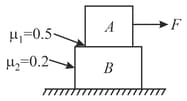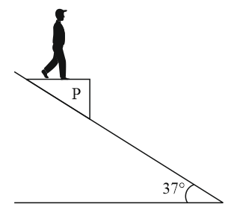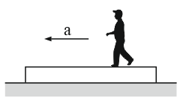B M Sharma Solutions for Chapter: Newton's Laws of Motion (With Friction), Exercise 54: CONCEPT APPLICATION EXERCISE 7.3
B M Sharma Physics Solutions for Exercise - B M Sharma Solutions for Chapter: Newton's Laws of Motion (With Friction), Exercise 54: CONCEPT APPLICATION EXERCISE 7.3
Attempt the practice questions on Chapter 7: Newton's Laws of Motion (With Friction), Exercise 54: CONCEPT APPLICATION EXERCISE 7.3 with hints and solutions to strengthen your understanding. PHYSICS For Joint Entrance Examination JEE (Advanced) Mechanics I solutions are prepared by Experienced Embibe Experts.
Questions from B M Sharma Solutions for Chapter: Newton's Laws of Motion (With Friction), Exercise 54: CONCEPT APPLICATION EXERCISE 7.3 with Hints & Solutions
A small block of mass kept at the left end of a larger block of mass and length . The system can slide on a horizontal road. The system is started towards the right with an initial velocity . The friction coefficient between the road and the bigger block is and that between the blocks is . Find the time elapsed before the smaller block separates from the bigger block.
A small block of mass is placed on a plank of mass . The block is connected to the plank with the help of a light string passing over a light smooth pulley, shown in the figure. The coefficient of static friction between the block and plank is . The coefficient of friction between the plank and the horizontal surface is zero. What maximum horizontal force applied on the block of mass can make the block and plank not slide relatively?

Two blocks and are arranged as shown in the figure ( and ). Find the acceleration of blocks, if .

In the figure, block is placed on top of block . Both of them have a mass of .
The coefficient of friction between blocks and are and . The table is frictionless. force is applied on block to the left, and force on block to the right. Find the minimum value of such that sliding occurs between the two blocks.

A man of mass stands on a horizontal weighing machine of negligible mass, attached to a massless platform that slides down at incline. The weighing machine reads . The man is always at rest w.r.t. weighing machine. Calculate:
(a) the vertical acceleration of the man.
(b) the coefficient of kinetic friction between the platform and incline.
A block of mass is horizontally thrown with a velocity of on a stationary long plank of mass whose surface has . Plank rests on frictionless surface. Find the time when the block comes to rest with respect to plank.
Find minimum normal force to be applied by each hand to hold three identical books in vertical position. Each book has mass and the value of coefficient of friction between the books as well as between hand and the book is .
A man of mass is moving with a constant acceleration w.r.t. plank. The plank lies on a smooth horizontal floor. If the mass of plank is also , then calculate the acceleration of plank and man w.r.t. ground, and frictional force extended by plank on man.




